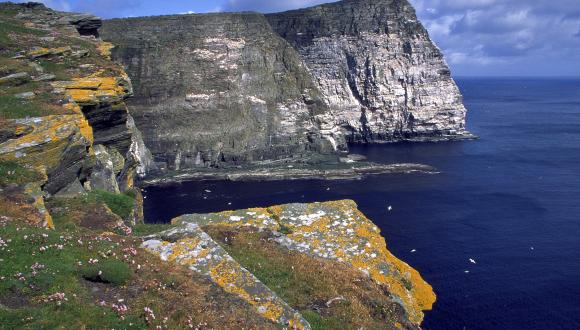Statistical News Release: Natural Capital Asset Index 2023
15 June 2023
An Official Statistics Publication for Scotland
NatureScot has today released the latest figures tracking the natural capital asset index (NCAI) up to 2021. The NCAI is an anthropocentric look at how well nature is able to contribute to people’s wellbeing through a range of ecosystem services and ecosystem characteristics. The NCAI is designed to complement tools that measure the state of biodiversity, including reporting on species, habitats and genetic diversity within wild species.
The main findings show that overall the NCAI has remained stable for 2021 over the short term. Over the long term, the NCAI is 2.7 percentage points above the 2000 baseline of 100. Breaking the NCAI down shows a mixture of improvement and decline amongst habitats and ecosystem service categories.
In 2021, provisioning ecosystem services remain stable (1.0 percentage points from 2018) but the overall trend since 2000 has increased 3.9 percentage points. NCAI uses the threshold of changes within one percentage point are considered stable. The main habitats that drive provisioning ecosystem services are inland surface waters and agricultural land, with characteristics such as cereal yield and the number of livestock, as well as the quality of water.
Regulating and maintaining ecosystem services are stable (-0.1 percentage points from 2018) but the overall trend since 2000 has increased by 2.3 percentage points. Regulating and maintaining ecosystem services are the services that most drive the NCAI through the high demand and the full range of habitats performing these services. A concentration of indicators in grasslands and woodlands is likely to be driving the improvement in regulating and maintaining ecosystem services, as both these ecosystems have been increasing in ecosystem extent and are heavily represented with quality indicators for this service.
Cultural ecosystem services are stable (-0.7 percentage points from 2018) with an overall increase of 2.3 percentage points since 2000. Cultural ecosystem services have the most even distribution of habitats and quality indicators. However, grasslands and woodlands habitats have the most influence with expanding ecosystem extent and highest number of quality indicators. Coastal habitats also contribute significantly to this category of ecosystem services.
Woodlands are continuing their improvement since 2011 (+1.6 percentage points from 2018 and +12.3 percentage points from 2000). Habitat extent, woodland birds, and certified woodland are driving the increase in woodland natural capital values, overshadowing the overall poor site condition of Scottish native woodlands.
Freshwater habitats are stable (no percentage point change from 2018) and 8.4 percentage points above the year 2000 baseline and no change in site condition from 2020.
Coastal habitats remain stable (-0.9 percentage points from 2018) with an overall increasing trend of 5.7 percentage points since 2000. Coastal site condition has decreased 0.8% from 2020.
Grasslands decreased 2.0 percentage points from 2018, likely due to a decrease in site condition with only 39% of grasslands in protected areas in favourable condition for 2021. Grasslands are 1.5 percentage points above the 2000 baseline.
Heathlands are stable (-0.8 percentage points from 2018) after a low in 2011 and steadily trending back to, but are still below year 2000 levels (-2.1 percentage points). Site condition remains stable while the upland bird indicator continues its downward trend.
Mires, bogs, fens remain stable (-0.1 percentage points from 2018) but remain below year 2000 levels (-3.6 percentage points). Site condition has remained steady from 2019 with 53% of sites in favourable condition.
Agriculture and cultivated habitats increased 3.5 percentage points from 2018 but have remained below the baseline (-3.9 percentage points since 2000) largely due to a reduction in ecosystem extent.





